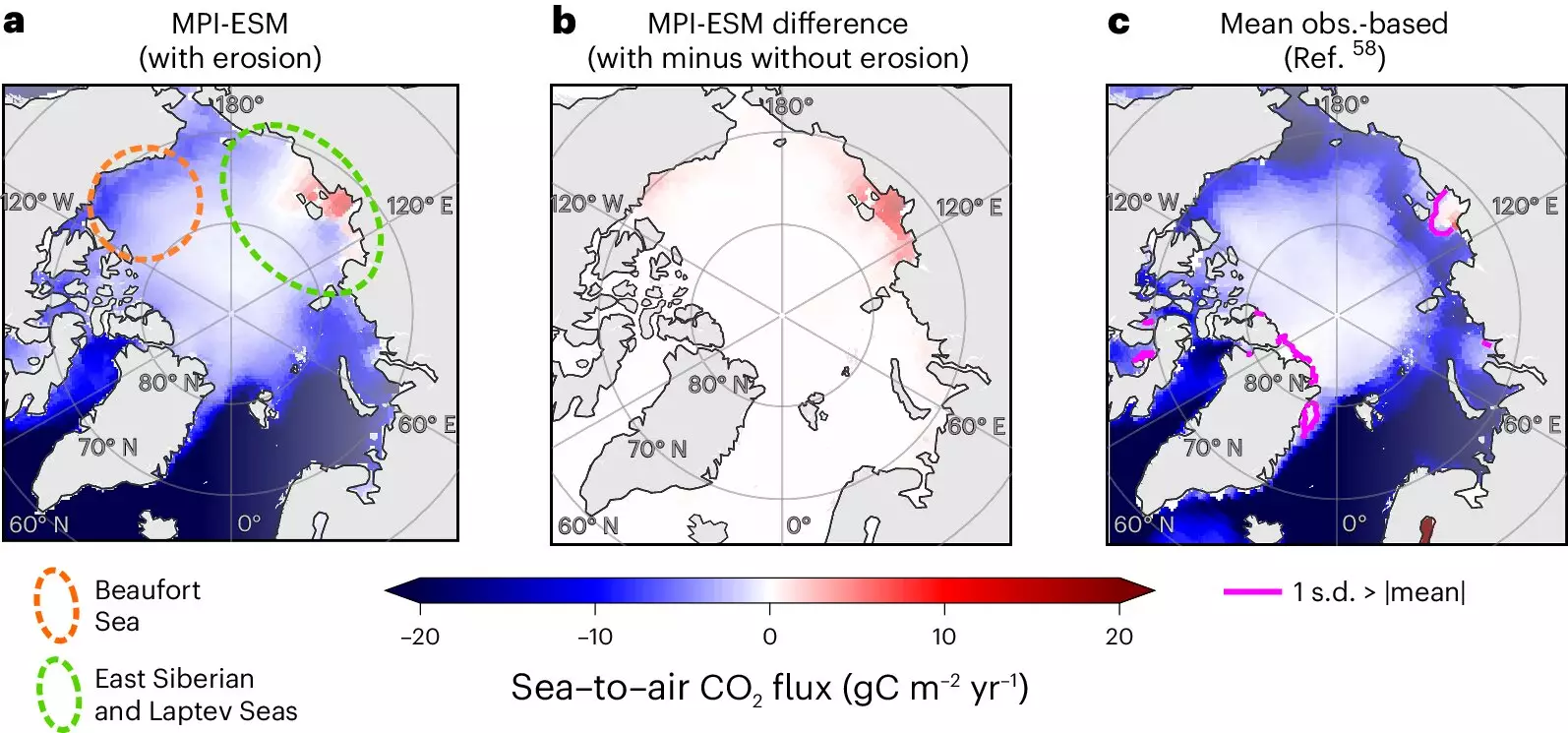As global temperatures rise, the Arctic region faces alarming transformations that jeopardize its role as a crucial carbon sink. New research highlights that the Arctic Ocean’s capacity to absorb carbon dioxide (CO2) from the atmosphere is increasingly impaired because of melting permafrost and intensified coastal erosion. This article explores the implications of these findings, delving into the interconnected relationship between permafrost stability and atmospheric carbon levels while emphasizing the possible long-term effects on our planet’s climate system.
A recent study published in *Nature Climate Change* underscores the significance of Arctic permafrost erosion, revealing that these regions might emit more carbon than they absorb in the near future. By the year 2100, the annual increase in atmospheric CO2 associated with this phenomenon could equate to roughly 10% of all car emissions in Europe recorded in 2021. David Nielsen, the study’s lead author from the Max Planck Institute for Meteorology, noted that this marks a critical turning point, as the Arctic Ocean’s CO2 absorption ability is projected to decline—a negative sign for global climate health.
The study reiterates concerns regarding coastal permafrost erosion, which might accelerate by two to three times by 2100. As temperatures rise due to anthropogenic climate change, permafrost—defined as soil that remains frozen year-round—begins to thaw, leading to unprecedented vulnerabilities along the Arctic coast. Such erosion not only contributes to CO2 release but also enhances the capability of oceanic forces to further displace soil into the ocean, thereby undermining the Arctic’s historical role as a carbon sink.
Historically, permafrost has acted as a vast carbon reservoir, sequestering approximately 2.5 times more carbon than exists in the global atmosphere. This reality escalates the urgency surrounding permafrost destabilization. The release of this carbon could radically reshape the Earth’s climate dynamics, creating a feedback loop that exacerbates global warming.
Nielsen emphasizes the robustness of the study’s findings, revealing that irrespective of the organic models applied, all simulations demonstrated a reduced capacity for CO2 absorption in the Arctic Ocean. Such consistency highlights the significant risk posed by the ongoing thawing of Arctic permafrost, which has already begun to accelerate at a pace three to four times swifter than the global average.
Aside from atmospheric implications, the erosion of permafrost has dire consequences for coastal ecosystems and local communities. Regions such as Drew Point in Alaska, the Mackenzie River Delta in Canada, and parts of Siberia exemplify acute hotspots of permafrost loss. The consequences of this degradation extend beyond increased emissions; it also leads to ocean acidification and a disruption of local ecological networks.
Communities, like Shishmaref in Alaska, face enormous challenges as rising sea levels and intensified storm activity threaten their very existence, triggering calls for relocation. This erosion is not merely an environmental issue; it threatens the cultural heritage and archaeological sites integral to these communities’ identities.
The implications of permafrost erosion extend well beyond Arctic boundaries. The study projects a significant feedback mechanism whereby atmospheric CO2 could increase by 1.1 to 2.2 million tons annually for every 1°C (1.8°F) of global warming. Though the Arctic region constitutes a modest geographical area relative to the globe at large, its impact holds critical significance for the world’s climate system.
Despite the notable carbon contributions from melting permafrost, it’s important to recognize they still represent a mere fraction (around 0.1%) of total human-generated emissions. However, given that these emissions are the driving force behind warming trends that result in permafrost thaw, the urgency for global climate action—to reduce fossil fuel reliance and curb greenhouse gas emissions—becomes paramount.
As the Arctic continues to warm at an alarming rate, it is pivotal for researchers to deepen their understanding of the mechanisms contributing to these changes. The findings presented in this recent study advocate for further investigation into how permafrost loss will transform the Arctic Ocean’s ability to sequester carbon. The message is clear: without immediate efforts to address anthropogenic climate change, the fragile balance maintained by the Arctic ecosystem will be increasingly compromised. As our understanding evolves, so too must our commitment to mitigating the factors that threaten this critical part of our planet’s climate system.

